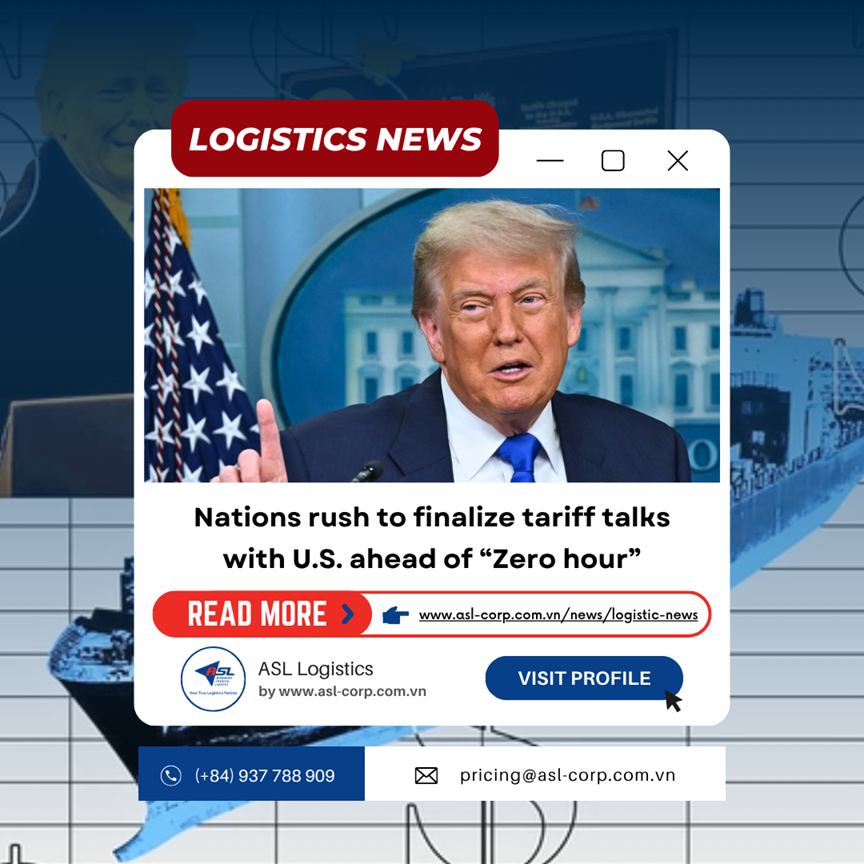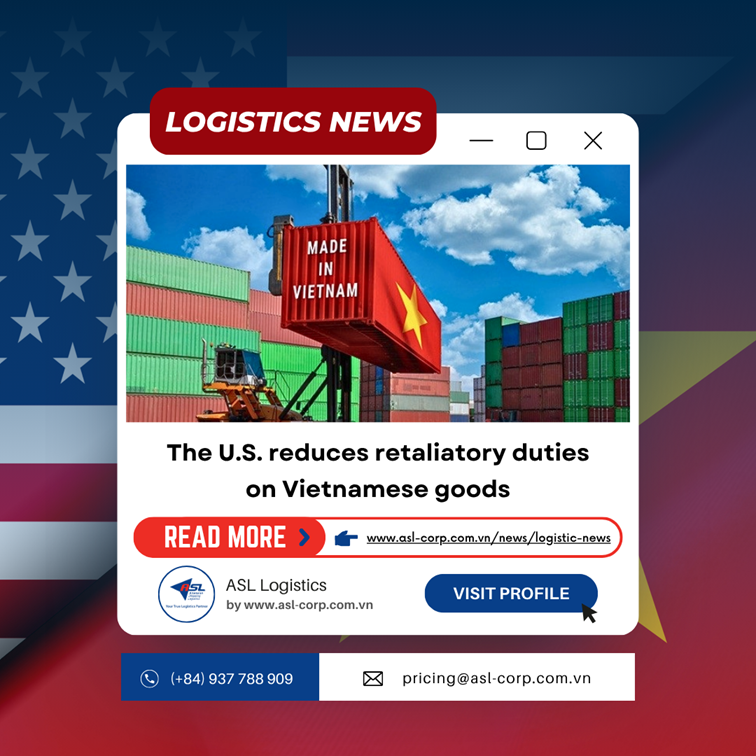Logistic News
BUSINESSES ACCELERATE EXPORTS AHEAD OF U.S. TARIFF IMPLEMENTATION
02 June 2025
After the U.S. imposed a 46% retaliatory tariff on Vietnamese goods, businesses received requests from partners — especially those in the United States — to accelerate delivery schedules.

According to the General Statistics Office, Vietnam’s export turnover in the first four months of the year increased by 13% compared to the same period last year. This growth was largely driven by businesses — particularly in the manufacturing and processing sector — who accelerated shipments to ensure timely delivery before the new U.S. retaliatory tariffs take effect on July 9.
Following the U.S. decision to impose a 46% retaliatory tariff on Vietnamese goods, many Vietnamese exporters have received urgent requests from partners, especially in the United States, to speed up delivery schedules. Typically, each order bound for the U.S. takes about two months from the time it's received to production, final processing, paperwork completion, and actual export. At this point, many companies are operating at full capacity, mobilizing all available resources to fulfill the final shipments to the U.S. before the July 9 deadline.
Mr. Dang Tran Thuy, General Director of Kyoyo Viet Nam Metal Founding Joint Stock Company, shared: “We currently have three orders that must be exported to the U.S. Under the tariff policy introduced by President Donald Trump, we are required to complete production and shipment before June 15. The company is working overtime to meet the schedule.”
In the textile and garment sector, while expediting existing U.S. bound orders, businesses are also actively seeking to diversify markets. Encouragingly, some companies have secured orders through the end of Q3 this year.
Mr. Pham Viet Thang, Chairman of the Board of Viet Thang Jeans, said: “We’re trying to ship all U.S.-bound orders before July 1. Our goal is to maintain the current export volume.”
Mr. Than Duc Viet, General Director of Garment 10 Corporation Joint Stock Company, added: “We’re fully focused on production. Many customers now want earlier deliveries than originally scheduled. Aside from the U.S., we’ve expanded to markets like Canada, ASEAN, Taiwan (China), South Korea, and recently, India. Diversifying markets is a long-term strategy to reduce risk exposure.”
Currently, the U.S. accounts for 30.43% of Vietnam’s total export turnover, with many key products dependent on this market. While tariff negotiations between the two countries are progressing with some positive signals, businesses and industry associations are advised to prepare contingency plans.
Dr. Tran Toan Thang, Head of the International Affairs and Integration Policy Department at the Ministry of Finance’s Institute for Strategic and Policy Studies, commented: “Vietnam's market share in the U.S. will likely decline from its pre-tariff level. Competition will increase, and corporate profits may fall. Over time, we will need to restructure our export markets.”
Experts continue to urge Vietnamese enterprises to diversify exports by leveraging the 17 free trade agreements (FTAs) Vietnam has signed. This will help businesses proactively manage production and operations, and stay on track with the 12% export growth target set at the beginning of the year.

Head Office
ASL Hồ Chí Minh
Số 31/34A Ung Văn Khiêm, Phường Thạnh Mỹ Tây, TP. Hồ Chí Minh, Việt Nam
 Công Ty Cổ Phần Giao Nhận Vận Tải Mỹ Á
Công Ty Cổ Phần Giao Nhận Vận Tải Mỹ Á
 (+84)28 3512 9759
(+84)28 3512 9759
 (+84)28 3512 9758
(+84)28 3512 9758
 pricing@asl-corp.com.vn
pricing@asl-corp.com.vn
 mdirector@asl-corp.com.vn
mdirector@asl-corp.com.vn
 www.asl-corp.com.vn
www.asl-corp.com.vn
LOGISTICS SERVICES










.png)
.png)

.png)





